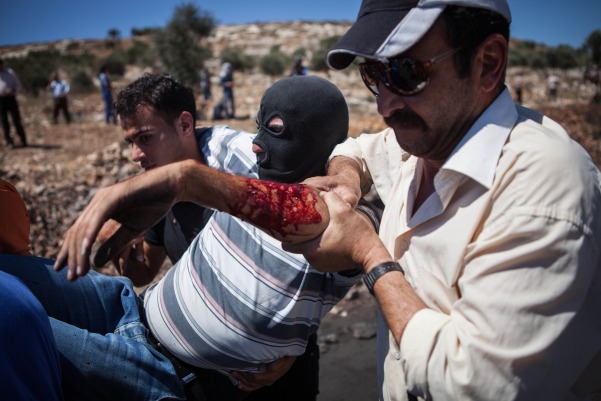Tag: Live Ammunition
-
Young man injured by Israel army live ammunition in invasion of Iraq Bureen
21st July 2014 | International Solidarity Movement, Nablus team | Iraq Bureen, Occupied Palestine On Thursday, July 17, 19 year old Mohamad Yousef Kadan was shot by an Israeli soldier in Iraq Bureen, near Nablus in the northern half of the West Bank, during an army invasion into the village. Mohamad was playing football with…
-
Israeli forces shoot 20-year-old with live ammunition during Ni’lin demonstration
18th July 2014 | International Solidarity Movement, Ramallah | Ni’lin, Occupied Palestine Today at the weekly demonstration in the village of Ni’lin near Ramallah, the Israeli military shot live ammunition at protesters. Palestinians, Israeli activists, and internationals marched through the olive groves belonging to the village, demanding their land back and freedom for all Palestinians, only to be met by a cloud…
-
Israeli forces shoot five protesters with live ammunition at Kufr Qaddum demonstration
12th July 2014 | International Solidarity Movement, Nablus team | Kufr Qaddum, Occupied Palestine There were roughly 100 people demonstrating in Kufr Qaddum yesterday. A number of the Palestinian youths present began to throw stones, when suddenly a young Palestinian fell to the ground, clutching his leg. An entry wound and an exit wound could clearly be seen. A…



